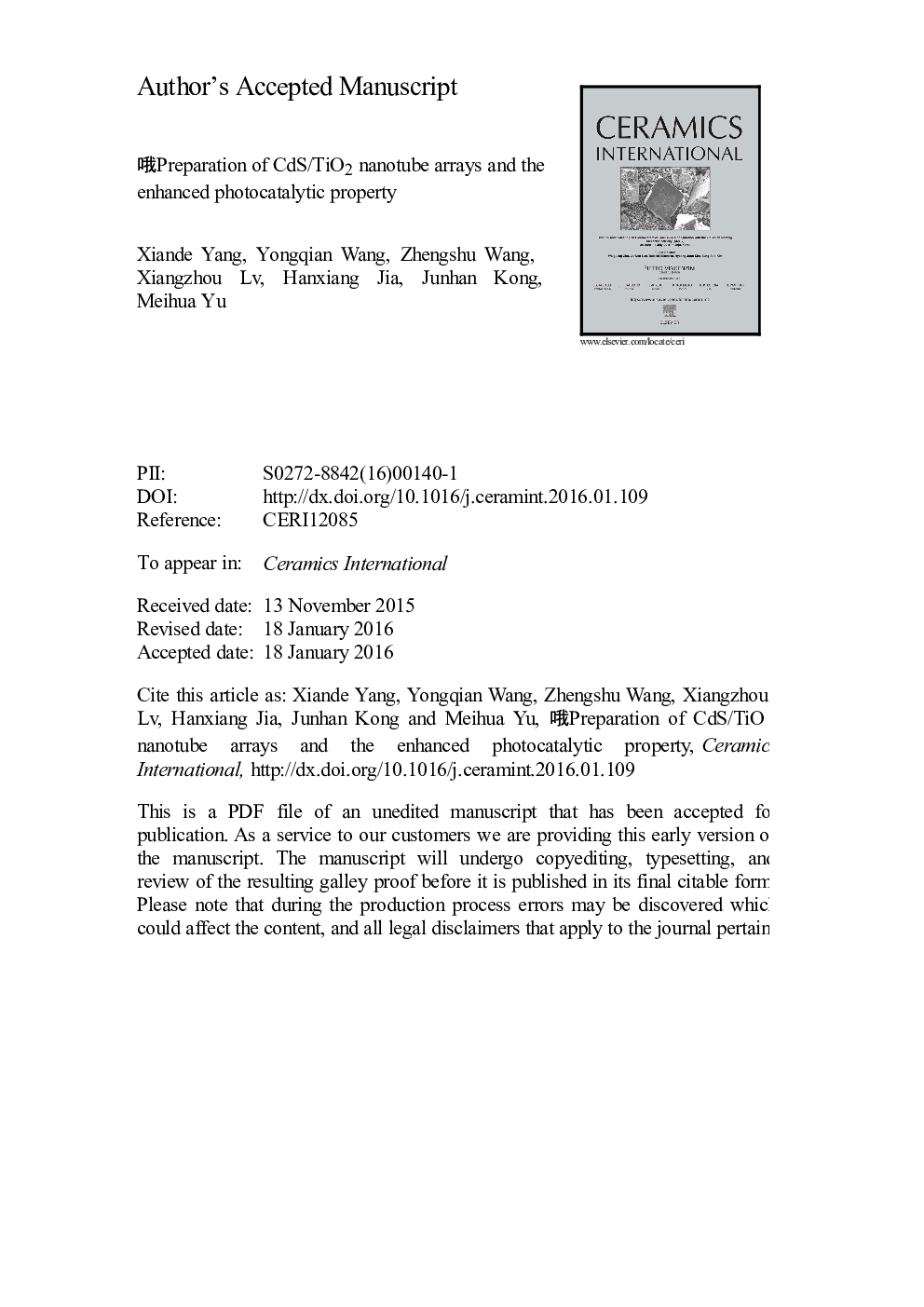| Article ID | Journal | Published Year | Pages | File Type |
|---|---|---|---|---|
| 10624300 | Ceramics International | 2016 | 17 Pages |
Abstract
In this paper, a series of CdS/TiO2 NTs have been synthesized by SILAR method. The as-prepared CdS/TiO2 NTs have been analyzed by X-ray diffraction (XRD), field emission scanning electron microscopy (FESEM), energy dispersive spectrometer (EDS), and ultraviolet-visible (UV-vis). And their photocatalytic activities have been investigated on the degradation of methylene blue under simulated solar light irradiation. XRD results indicate that TiO2 NTs were anatase phase, CdS nanoparticles were hexagonal phase. FESEM results indicate that low deposition concentration can keep the nanotubular structures. UV-vis results indicate that CdS can be used to improve the absorbing capability of TiO2 NTs for visible light, and the content of CdS affects the band gap. Photocatalytic results indicate that CdS nanoparticles are conducive to improve the photocatalytic efficiency of TiO2 NTs, and the highest degradation rate can reach 93.8%. And the photocatalytic mechanism of CdS/TiO2 NTs to methylene blue is also described.
Related Topics
Physical Sciences and Engineering
Materials Science
Ceramics and Composites
Authors
Xiande Yang, Yongqian Wang, Zhengshu Wang, Xiangzhou Lv, Hanxiang Jia, Junhan Kong, Meihua Yu,
